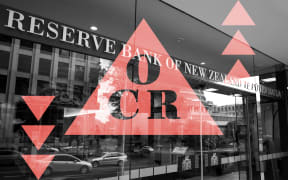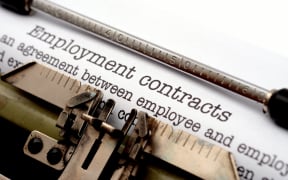
Stats NZ data shows a 0.4 percent rise in the number of filled jobs in March on the month before. Photo: RNZ /Dom Thomas
Unemployment is set to rise to a three-year high and wage growth ease as the realities of a slowing economy with too many people chasing too few jobs take effect.
Economists' expectations, including the Reserve Bank, are for unemployment to rise to about 4.2 percent at the end of March from 4 percent, with the annual wage growth edging down to 3.8 percent.
The economy had been in recession for much of the past year and with little prospect of an improvement the labour market would deteriorate, ASB senior economist Mark Smith said.
"Growth in the labour supply looks set to continue to outstrip the slowing demand for workers, with the unemployment rate set to push above 5 percent by year end."
But paradoxically the economy has added jobs, reflecting the lags in the economy more than a rise in labour demand.
The growth in employment had mostly been in sectors benefiting from previous government spending such as education and training, healthcare and social assistance, and public administration and safety, ANZ economist Henry Russell said.
But, he said, the workforce was likely to be losing workers gradually.
"The significant increase in competition in the labour market is likely to see fringe workers who were pulled in at the height of tightness in the labour market continue to exit."
Stats NZ data showed a 0.4 percent rise in the number of filled jobs in March on the month before, but a fall in the number of 15-19-year-olds employed on a year ago.
Recent job advert statistics from the Seek employment website have also shown a dramatic plunge in jobs being listed and a sharp lift in applications for those on offer.
Mounting job losses
Since the start of the year there has been a stream of announcements, largely in the public service, of job cuts but many of those will not be captured in the latest numbers, and also include unfilled positions.
To date, close to 3500 public service roles have been slated to go.
In the private sector the number so far this year is about 700.
The bulk of those are the Newshub closure planned for July, nearly 200 in mobile operator One NZ, around 50 at food maker Sanitarium, and smaller numbers at a Fletcher Building steel subsidiary, business consultancy PwC, 2 Degrees, winemaker Indevin, and the ANZ bank.
For the time being the job losses announced will not markedly shift the unemployment dial. It is a combination of fewer jobs and more people chasing them.
More workers lower wages
Another consequence of the softening of the labour market is expected to be reduced wage pressures.
Labour shortages were no longer the biggest worry for businesses, Westpac senior economist Michael Gordon said.
"That would suggest that the pressure to bid up [wages] to attract workers has largely faded."
Expectations are for a 3.7 percent annual rise in labour costs, which would reflect some large public service deals of last year.
"We should see a more meaningful moderation in wage growth over the year ahead," Gordon said.
A slowing economy, softening labour market, and easing wages play to the Reserve Bank's determination to lower inflation.
"The RBNZ will be wary of labour market and labour cost pressures failing to sufficiently cool to deliver sub 3 percent inflation in a sustained basis," ASB's Smith said.
"The RBNZ will want to make sure that inflation will settle below 3 percent before cutting the OCR (official cash rate). OCR cuts are expected to commence in early 2025."







